The Dynamic Duos Blogathon: Alan Ladd and Veronica Lake
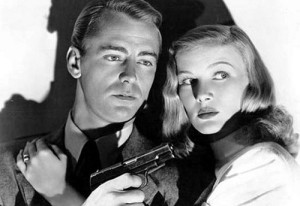 Cool. Compact. Blonde. Gorgeous.
Cool. Compact. Blonde. Gorgeous.
That was Alan Ladd and Veronica Lake.
This visually appealing couple appeared in a total of seven films together – This Gun for Hire (1942), The Glass Key (1942), Star Spangled Rhythm (1942), Duffy’s Tavern (1945), The Blue Dahlia (1946), Variety Girl (1947), and Saigon (1948). In three of these – Variety Girl, Star Spangled Rhythm and Duffy’s Tavern – they appeared as themselves. My favorites, of course, were their film noir features – but more about those later.
Lake and Ladd had more in common than their series of films together – they were both golden-haired, both petite in stature, both attractive. Both were known better as movie stars than acclaimed thespians. Both struggled with alcohol, both experienced well-publicized ups and downs on and off screen, and – in an odd and intriguing twist of fate – both died at the age of 50.
Join me as I take a closer look at this dynamic duo – at their contributions to the annals of film and their captivating, often turbulent, lives behind the silver screen. And fasten your seat belts…
 Veronica Lake: Troubled Goddess
Veronica Lake: Troubled Goddess
Born Constances Frances Marie Ockelman on November 14, 1922, in Brooklyn, New York, Veronica Lake once recalled that she was “toughest broad on the block.” While she claimed in later years that she never had a penchant for acting, she was seen at the age of eight in a grade school production of Poor Little Rich Girl – a title that would turn out to be somewhat prophetic, given the course of Lake’s life. Her father, a seaman of German-Danish extraction, was killed on a ship when Constance was 12, and within a year, her mother married a staff artist for the New York Herald Tribune, Anthony Keane, whose last name Constance adopted.
In 1938, at the age of 16, Constance moved to Hollywood with her mother, stepfather and a cousin, enrolling – mostly due to urging from her ambitious mother – in the Bliss Hayden School of Acting. She got her first taste of filmdom the following year when she accompanied a school friend, Gwen Horn, to the RKO studios, where Gwen hoped to land a bit part in an Anne Shirley vehicle, Sorority House (1939). Both girls were given roles as extras, and Constance followed these up with bit parts in several other features, including Forty Little Mothers (1940), an MGM film starring Eddie Cantor. Of her appearances in these films, the actress later admitted, “I was so lousy that you could put all the talent I had into your left eye and still not suffer from impaired vision. I was that bad.”
 While on the MGM lot, Constance met art director John Detlie, who was 16 years her senior. Before the year was out, they would become man and wife. Career-wise, Contstance signed with the William Morris Agency and tested for a role as a nightclub singer in I Wanted Wings (1941) for Paramount producer Arthur Hornblow, Jr. Of her test, the actress later recalled, “My hair kept falling over one eye and I kept brushing it back. I thought I had ruined my chances for the role….But Hornblow was jubilant about that eye-hiding trick. An experienced showman, he knew that the hairstyle was something people would talk about.” She got the part.
While on the MGM lot, Constance met art director John Detlie, who was 16 years her senior. Before the year was out, they would become man and wife. Career-wise, Contstance signed with the William Morris Agency and tested for a role as a nightclub singer in I Wanted Wings (1941) for Paramount producer Arthur Hornblow, Jr. Of her test, the actress later recalled, “My hair kept falling over one eye and I kept brushing it back. I thought I had ruined my chances for the role….But Hornblow was jubilant about that eye-hiding trick. An experienced showman, he knew that the hairstyle was something people would talk about.” She got the part.
By the time shooting ended on I Wanted Wings, Constance was renamed Veronica Lake – reportedly, Hornblow borrowed the name “Veronica” from his secretary and added the surname because “her eyes are calm and blue like a lake.” After the film’s release, the entire nation knew of the tiny blonde with the sultry voice and the peek-a-boo hairdo. Around this time, Lake also launched the bad-girl off-screen image that was to plague her throughout her career. It was reported that she had “personality clashes” with co-star Constance Moore, who said of Lake years later, “This was a girl who was handed stardom on a silver platter…and in a short time she had blown it all. Her lack of professionalism was evident even during I Wanted Wings, her big break. She held up production several times. She’d simply disappear, run off here and there. Veronica was her own worst enemy. She would goof up on personal appearance tours, make enemies. And worst of all, her drinking.”
But Lake’s slide down Hollywood’s slippery slope was more than a decade away, and in the early 1940s, her star continued to shine. She soared to superstardom opposite Joel McCrea in Sullivan’s Travels (1941), and shortly after filming completed, she gave birth to her first child, Elaine. The following year saw Lake’s first teaming with Alan Ladd in This Gun for Hire (1942). Regarding her performance, Lake attributed her appeal more to her presence than any sort of dramatic talent. “I don’t think I’m outstanding,” she told a reporter. “In fact, I don’t believe it is necessary to being a star. The audience doesn’t want that, they don’t want the best acting on the screen. What they want is personality, something new, something different.”
Lake’s next film was another teaming with Ladd, The Glass Key (1942); most reviewers agreed that the petite bombshell had scored another hit. This was followed by another box-office success, I Married a Witch (1942), and then she was back on screen in a film with Ladd, Star Spangled Rhythm (1942), in which she parodied the trademark that had made her famous. She then amazed critics in So Proudly We Hail (1943) with her portrayal of an emotionally distraught nurse during World War II.
Although Lake was now at the peak of her popularity, her marriage to John Detlie was on the rocks. When Lake became pregnant with the couple’s second child, it appeared that the relationship could be salvaged, but during production for her next film, The Hour Before the Dawn (1944), Lake tripped over a cable on the set and the baby boy was born prematurely. Seven days later, Lake’s son died – and so did the marriage.
Meanwhile, Lake was becoming known in the Hollywood community as a trouble-making rebel. In a 1944 article in Click, she was described as “one of the most acute problems in Hollywood” with a “time-bomb mind.” She was notorious for being hot-tempered, frequently insulted her co-stars, began drinking heavily, and reportedly even stole the change that her fans had sent her for her autograph, refusing to sign. Then, after a whirlwind romance, she married Andre De Toth, a hard-drinking Hungarian with an explosive, often violent, temperament.
During the next two years, Lake’s private exploits caused her popularity to wane, and she appeared in a series of films that failed to reverse this trend (including Duffy’s Tavern [1945], a musical comedy that also featured Ladd). She experienced a brief rebound in 1946, though, when she was again teamed with Alan Ladd for her third noir, The Blue Dahlia. It would be the last high point of her contract with Paramount. She would appear in only seven movies in the next six years, including her final appearances with Ladd in Variety Girl (1947) and Saigon (1948).
Lake’s personal life was hitting the skids as well. Although she gave birth to a son in 1945 and a daughter in 1948, her marriage to de Toth was fraught with constant problems, and in 1948, Lake’s mother sued her for failing to uphold weekly payments based on a 1943 agreement in which the actress promised to repay her parents for backing her career. In November 1948, Lake was informed that her contract with Paramount would not be renewed, and a year later, she and her husband began selling off her jewelry in an attempt to keep the family afloat. They were forced to declare bankruptcy a few years later, and by 1952 their marriage was over.
Lake made news again in 1955 when she remarried, this time to songwriter Joe McCarthy in Traverse, Michigan, where she was appearing in a play. Sadly, the couple seemed to be bound mainly by their affinity for alcohol and by 1959, this union, too, had ended. A short time later, Lake was evicted from her New York apartment when she fell behind in the rent, and her life seemed to have hit rock bottom.
 In 1961, Lake found a job pasting felt flowers on lingerie hangers in a small South Broadway factory and the following year, the press had a field day when she was discovered living at the Martha Washington Hotel in Manhattan, paying a rent of seven dollars a day and working as a barmaid in the hotel’s cocktail lounge. When the story broke, fans around the world took pity on Lake, sending her letters and even money, but she returned every dime, claiming, “I still have some pride.”
In 1961, Lake found a job pasting felt flowers on lingerie hangers in a small South Broadway factory and the following year, the press had a field day when she was discovered living at the Martha Washington Hotel in Manhattan, paying a rent of seven dollars a day and working as a barmaid in the hotel’s cocktail lounge. When the story broke, fans around the world took pity on Lake, sending her letters and even money, but she returned every dime, claiming, “I still have some pride.”
Lake returned to the screen in 1966 in the low-budget horror film Footsteps in the Snow, followed two years later by Flesh Feast. The latter film, released three years after it was filmed, would mark Lake’s final feature film appearance. In 1969, she relocated to Ipswich, England, where she enlisted Donald Bain to help her write her self-titled autobiography. The book led to a renewed interest in the actress, and she received favorable reviews for her appearance in several stage productions, including A Streetcar Named Desire.
In June 1972, Lake was married for the fourth time, to Robert Carlton-Munro, a sea captain with the Royal Navy. But this marriage, characterized by drinking bouts and fights, ended in divorce the following year. By now, years of heavy drinking had taken a toll on Lake’s health, and during a visit to friends in Vermont in June 1973, she was hospitalized with acute hepatitis. She died there on July 7th, penniless and alone. She was 50 years old.
At the end, Lake had appeared to be turning her life around, but it was too late for the sultry temptress who had once held the world in her hands. In one of her last interviews, she had confidently announced her plans for the future: “I fully intend to see the year 2000…. I shall continue to work at my career. The world owes me nothing, but I owe it a great deal and before I get much older I intend to deliver the goods.”
(Personal note: I have a special soft spot for Veronica Lake – my oldest daughter is indirectly named for her. I named my daughter after my best friend, and my best friend was named after Veronica Lake. Cool, huh?)
Alan Ladd: Golden Paradox
One of the biggest movie stars of his time, Alan Ladd was never nominated for an Academy Award and only a handful of his films are remembered today. He was larger than life on the silver screen, but he was short in stature in real life and to achieve his cinema height, he often wore shoe lifts or stood on platforms. In films, he exuded confidence, poise, and stamina; behind the scenes, he was overly sensitive, filled with self-doubt, and developed an increasing reliance on alcohol. He seemed to have it all – polished good looks, a dedicated wife, successful children, wealth, and fame – but he died alone, the victim of a lethal combination of drugs and alcohol.
“I feel every day as if it’s all a dream,” Ladd said once. “That I’m going to wake up and find myself pushing scenery around again.”
 An only child, Alan Walbridge Ladd, Jr., was born on September 3, 1913, in Hot Springs, Arkansas. When young Alan was just four years old, his accountant father suffered a fatal heart attack. A year later, Ladd and his mother, Ina, moved to Oklahoma City, where she met and married husband number two, a house painter by the name of Jim Beavers.
An only child, Alan Walbridge Ladd, Jr., was born on September 3, 1913, in Hot Springs, Arkansas. When young Alan was just four years old, his accountant father suffered a fatal heart attack. A year later, Ladd and his mother, Ina, moved to Oklahoma City, where she met and married husband number two, a house painter by the name of Jim Beavers.
Rather frail and undersized as a child, Ladd was teased unmercifully by his schoolmates, so he doubtlessly felt a sense of relief when his mother and stepfather decided in the early 1920s to move to California. But his school experience there wasn’t much better; his small stature led to the hated nickname of “Tiny,” and the actor once admitted that the harassment inflamed his “lousy temper.”
“The first day, some kid pushed my head into the fountain,” Ladd told the Saturday Evening Post in a 1957 interview. “I started to punch him and found out he was twins, but I licked them both.”
During his senior year at North Hollywood High School, Ladd developed an interest in acting after being convinced by an English teacher to participate in the school’s drama activities, and after his graduation, he landed a spot in a stock company of young actors and actresses put together by Universal Studios. However, Ladd lasted only four months before being dropped (along with most of his fellow performers, including a young Tyrone Power). Abruptly forced into the “real world,” Ladd went to work at a local newspaper, the San Fernando Valley Sun-Record, and later earned his keep at a series of varied vocations – he opened his own hot dog stand (naming it “Tiny’s Patio”), worked as a salesman for National Cash Register, reported the radio news for an oil company, and (still harboring his ambition to become an actor) hired on as a grip for Warner Bros. Studios.
While Ladd was struggling to find his way professionally, his personal life was not neglected. In 1936, he married Marjorie Jane “Midge” Harrold, a local girl he’d met several years earlier while working as a movie theater usher. The following year, the couple had a son, Alan Ladd, Jr. (who would grow up to become president of 20th Century-Fox Studios, Chairman and CEO of Pathe Entertainment, and head of his own company, The Ladd Company). Ladd’s domestic bliss was shattered in 1937, however, when, a year after the sudden death of his stepfather, Ladd’s mother, Ina, committed suicide by ingesting ant paste. (Ladd’s grief over his mother’s death was exacerbated by his overwhelming guilt – following an argument with Ina, he had given her money, unaware of her intent to purchase the lethal insecticide.)
Meanwhile, determined to give acting another try, Ladd pooled his meager savings and enrolled in the Ben Bard School of Acting, supporting his family by making transcription records for radio and playing bit parts in a handful of movies. But it was his increasingly frequent appearances on Los Angeles radio station KFWB that led to his first big break – he was heard one fateful day by actress-turned-agent Sue Carol. Ladd signed with Carol’s agency and soon found himself in a series of minor roles in such films as The Light of Western Stars (1940), where he played a saloon cowhand, and Great Guns (1941), a Laurel and Hardy feature in which he had a single line. He was also cast in an unbilled role in the Orson Welles’ classic, Citizen Kane (1941); if you look closely, you can see him in the shadows of a warehouse scene near the film’s end, wearing a porkpie hat.
“I tried for better roles over and over again,” Ladd said once, “but directors or producers just kept saying I was too young or too old, too slight or too blond. Or else my name lacked prestige for the part. It was always something.”
But Ladd’s days of futilely searching for significant movie roles were nearing an end. After attracting notice in a small but showy role as an ill-fated British flier in RKO’s Joan of Paris (1942), Ladd learned that director Frank Tuttle was looking for an unknown to star as a ruthless killer in his upcoming feature for Paramount, This Gun for Hire (1942). Ladd won the role – and a contract with Paramount – and entered the realm noir in the first of his six characterizations from the era, an icy killer known as Raven. The release of This Gun for Hire transformed Ladd into an overnight sensation and his portrayal of the baby-faced assassin was met with rave reviews.
Ladd’s sudden catapult into cinematic fame was accompanied by dramatic upheavals off-screen as well. During the two years of his association with Sue Carol, Ladd and his agent had become increasingly close, despite the fact that both were married. And Ladd’s wife, Midge, according to her sister, was not “a fighter.”
“Besides, [Midge] was too young, too guileless to cope with a woman of Sue’s experience,” Barbara Harrold Grether said in Beverly Linet’s 1979 book, Ladd. “Sue had money, though not a great fortune. But what she really had was power. She had a way of getting what she wanted.”
Undoubtedly, what Sue Carol wanted was Alan Ladd, and in July 1941, Ladd’s marriage ended in divorce. Carol was granted a divorce from her third husband the following March, and a week later, Ladd and his agent, who was 10 years his senior, were quietly married in Tijuana, Mexico. The couple would later have two children, Alana Sue in 1943, and David Alan in 1947 (who would grow up to marry – and later, divorce – actress Cheryl Ladd, of Charlie’s Angels fame, and attain success as a television and film producer).
Meanwhile, Paramount, wanting to capitalize on the success of This Gun for Hire, quickly reteamed Ladd and Veronica Lake in the actor’s second film noir, The Glass Key (1942). This was another hit for the duo, and the two appeared again in Paramount’s star-studded musical tribute to the war effort, Star Spangled Rhythm (1942). Ladd next starred in China (1943), a popular wartime adventure with Loretta Young and William Bendix. In January 1943, before the release of China, Ladd enlisted in the Army Air Forces, but before the year was out, the actor was given an honorable medical discharge for what was termed a “double hernia.”
Although his next film, And Now Tomorrow (1944), was panned by New York Times critic Bosley Crowther as “a very stupid little movie,” Ladd had yet another hit on his hands. And this box-office success was followed by a series of pictures that, while disdained by reviewers, attracted moviegoers in droves, including two more movies with Veronica Lake, Duffy’s Tavern (1945), a comedy musical with a star-packed cast, and The Blue Dahlia (1946), his third film noir. In this well-received feature, Ladd portrayed a war veteran who returns from service to discover that his wife is romantically involved with a nightclub owner.
Shortly after he completed filming on The Blue Dahlia, Ladd was suspended by Paramount after refusing to report to work on the film California (later made with Ray Milland). After a four-month layoff, the actor inked an agreement with the studio that guaranteed him $75,000 per film. In 1947, he starred in his fourth film noir, Calcutta, starring Gail Russell and William Bendix, but although fans once again flocked to see Ladd on screen, Calcutta wasn’t the critical darling that his teamings with Veronica Lake had been.
During the next two years, Ladd continued his successful run on the big screen, with features such as Whispering Smith (1948), his first Western and his first film in Technicolor; Saigon (1948), his final teaming with Veronica Lake; and The Great Gatsby (1949), the second screen version of the F. Scott Fitzgerald novel. Although reviews of Ladd’s performance in the latter film were lukewarm at best (with Time magazine’s critic saying he looked “as comfortable as a gunman at a garden party”), his characterization of the ill-fated bootlegger is today viewed as one of the better portrayals of his career. Also during this period, Ladd returned to the dark side of the screen, starring with Donna Reed and Arthur Kennedy in Chicago Deadline, his fifth film noir. As with his previous noir outing sans-Lake, the feature was a box-office success but the reviews were mixed, at best.
With the dawn of the 1950s, Ladd continued to ride on a wave of public adoration, and his films during this period included his last noir, Appointment With Danger (1951), where he played a postal inspector. This feature was another hit, but with his Paramount contract nearing expiration, Ladd decided to bid farewell to the studio that had been his home for the last decade. After agreeing to make two more pictures for Paramount, Ladd signed a six-picture deal with Warner Bros. In 1952, Ladd starred in his first feature for Warners, The Iron Mistress, portraying the inventor of the Bowie knife, then returned to Paramount for what would turn out to be the best-remembered film of his screen career – Shane (1953). In his sensitive portrayal of the mysterious stranger who helps defend a family against ruthless cattle barons, Ladd earned well-deserved acclaim. Unfortunately, while Oscar nominations were doled out to co-stars Brandon DeWilde and Jack Palance, Ladd was overlooked by the Academy; some say that because of Ladd’s imminent defection from Paramount, studio heads declined the opportunity to lobby for a nomination on his behalf. Still, the film serves as a lasting testament to Ladd’s talent and remains one of the finest Westerns ever made.
After Shane, Ladd’s career began a downhill slide from which he would never recover, with starring roles in such run-of-the-mill features as Desert Legion (1953), panned by one critic as “an impossibly dull type of ephemera,” and a series of forgettable productions filmed in England. Upon Ladd’s return from England, the actor announced the creation of his own company, Jaguar Productions; the films released under the Jaguar banner included The McConnell Story (1955), a biopic about real-life Korean War hero Joseph McConnell (who was killed while testing a Sabre jet just weeks before filming began). During filming of this feature, rumors flew that Ladd was having an affair with his co-star, June Allyson, wife of actor-director Dick Powell. (According to Beverly Linet’s book, Sue Carol called Powell to inform him that her husband was in love with Allyson, to which Powell reportedly replied, “Isn’t everyone?”) After filming, Ladd and Carol briefly separated, but they reunited a short time later, with Carol telling columnist Louella Parsons that “everything is all right.”
On screen, Ladd was seen in several Jaguar Productions, including Hell On Frisco Bay (1956), which marked the film debut of Ladd’s son, David. He also appeared with David in The Proud Rebel (1958), a well-received Civil War drama, but as Ladd neared his mid-40s, his handsome looks had started to fade, aided by what many viewed as an escalating drinking problem. More than one reviewer made a point to comment on the change in Ladd’s appearance; in 1957, columnist Sheilah Graham sniped, “Won’t Alan Ladd have to go on a diet if he wants to continue playing lover-boy roles?” And Ladd’s performance in the mediocre 1960 Western Guns of the Timberland (also featuring his daughter, Alana) prompted a similar comment from Dorothy Kilgallen, who wrote: “Audiences viewing Guns of the Timberland express surprise at Alan Ladd’s initial appearance; he’s gained so much weight he looks quite different from the actor they remember as the star of other films.”
Ladd’s life seemed to be spiraling out of control by November 1962, when the foreman of his ranch in Hidden Valley, California, found the actor in his pajamas, semi-conscious, with a bullet wound in his chest. Although the bullet had passed through one lung, Ladd made a speedy recovery and later explained to reporters that, thinking he heard a prowler, he had picked up his gun and “stumbled over something in the dark.” When he hit the floor, Ladd said, the gun went off.
“I reached for the phone and called Sue. ‘Migosh,’ I told her, ‘I think I’ve been shot!” Ladd told Modern Screen writer Kirtley Baskett. “Then I passed out, with the receiver still off the hook. Now wasn’t that a damn fool performance?”
Following this incident, Ladd was tapped a featured role in The Carpetbaggers (1964), based on the trashy best-seller by Harold Robbins – but the film would be his last. Although he remained sober throughout filming, Ladd reportedly began drinking after the end of the production, and on January 29, 1964, he was found dead in bed at his Palm Springs home. His death was ruled an accident, due to a reaction of chemical depressants and a “high level of alcohol.” Ladd was 50 years old.
One of Hollywood’s true stars, Alan Ladd is more often lauded more for his screen persona than for his acting ability, but in a handful of films, especially Shane, he evinced the ability to stretch beyond his cinematic image and display a talent capable of genuine depth. In a 1998 documentary on the actor’s life, Paramount executive A.C. Lyles offered an explanation for Ladd’s phenomenal appeal.
“I think every big star has a certain individual quality,” Lyles said. “Alan Ladd had his own, very distinct qualities. He had that very stone face at times, and he had a voice that just went with it. And he had such a command on screen.
“The camera fell in love with him.”
While both Veronica Lake and Alan Ladd saw successes in other films, there’s no denying that their three film noir appearances together rank among their most popular. Here’s an overview of these three must-see features and my favorite bit of trivia about each:
This Gun For Hire
In this picture, Lake portrays Ellen Graham, a cabaret performer whose becomes involved with a psychologically disturbed assassin named Raven, played by Ladd. Graham becomes an agent for federal authorities in their hunt for a Nazi spy and meets Raven on a train to Los Angeles, where Raven plans to murder the people who double-crossed him. The plot was typically complex, and even a little far-fetched, but it was certainly never dull.
Trivia tidbit: If you’ll pardon the spoiler, Alan Ladd’s character, Raven, dies at the end of this film. In her self-titled autobiography, Veronica Lake recalled that her character cradled Raven as he died, and in his review of the film, the critic from Variety commented, “Better men have died with their heads in less pleasant places.” Notwithstanding these observations, however, in the film, Lake is clearly standing beside Ladd during the final scene. I’m not sure what movie they were looking at!
The Glass Key
This feature offered a hodgepodge of characters with intertwined lives; Ladd portrayed Ed Beaumont, chief aide to political boss Paul Madvig (Brian Donlevy), who is engaged to Janet Henry (Lake), daughter of local reform candidate, Sen. Henry (Moroni Olsen), whose son, Taylor (Richard Denning), is having an affair with Madvig’s sister, Opal (Bonita Granville). (Whew!) When Taylor turns up dead, Madvig is implicated in the crime, and Ed works to find the real killer.
Trivia tidbit: This film features a scene where actor William Bendix – who plays the henchman of a seedy casino owner – unmercifully beats Ladd’s character. In real life, according to Ladd’s biographer, Bendix accidentally hit the diminutive Ladd firmly on the jaw during one take of the scene, knocking him unconscious. The film’s director, Stuart Heisler, ordered that the shot be printed, and it appears in the film. However, Bendix was extremely upset by his action, and when Ladd regained consciousness, he found the hulking actor crying. He was touched by Bendix’s reaction, the two became close friends, and Ladd would later specifically request that the actor appear in many of his future films, including China (1943), The Blue Dahlia (1946), and The Deep Six (1957).
The Blue Dahlia
Ladd portrayed Johnny Morrison, a war veteran who returns from service to discover that his wife is romantically involved with nightclub owner Eddie Harwood (Howard daSilva). When his wife (Doris Dowling) is murdered, Johnny is suspected of the crime and determines to find the real killer. Lake plays a mysterious stranger who gives Johnny a lift on the road, but who turns out to be closer to the case than she originally appears.
Trivia tidbit: Reportedly, Alan Ladd was none too happy about Doris Dowling playing his wife in the film. She was several inches taller than he.
 If you’ve never seen Veronica Lake and Alan Ladd together in a film noir feature, you simply must – they were made for each other. Cool, compact, blonde and gorgeous.
If you’ve never seen Veronica Lake and Alan Ladd together in a film noir feature, you simply must – they were made for each other. Cool, compact, blonde and gorgeous.
The perfect duo.
This post is part of the Dynamic Duos in Classic Film blogathon, hosted by a dynamic duo in their own right – Aurora at Once Upon a Screen and AnnMarie at Classic Movie Hub.
Do yourself a favor and click the photo to the right to check out the wealth of great posts being offered as part of this fantastic event! (You only owe it yourself.)













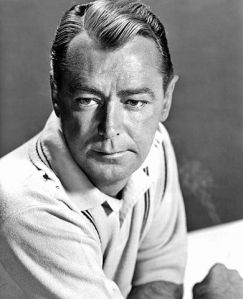

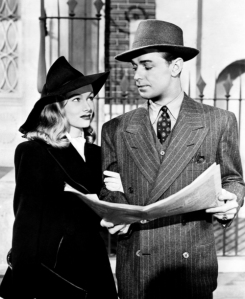


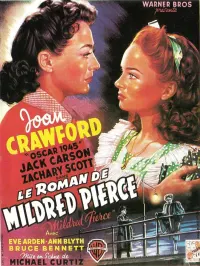




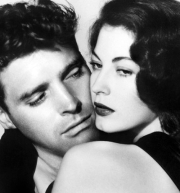













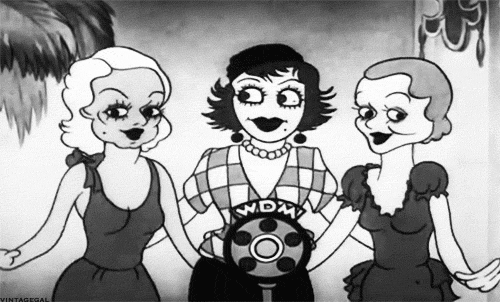


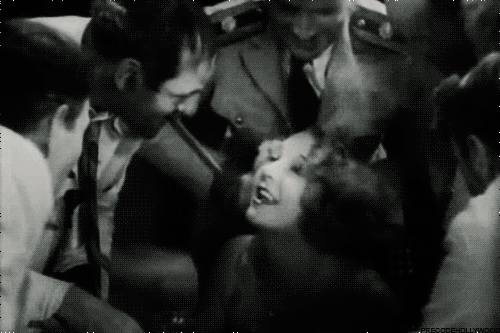


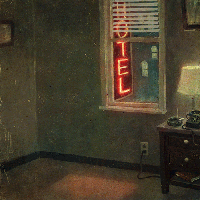
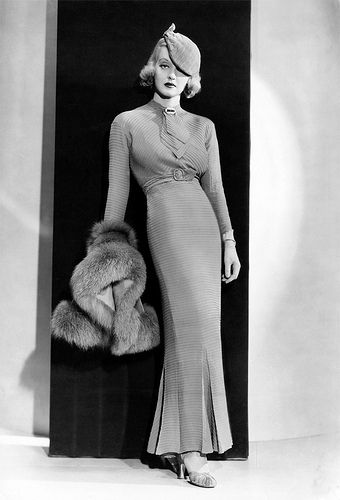



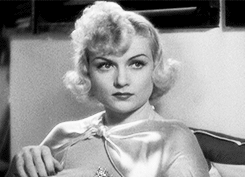
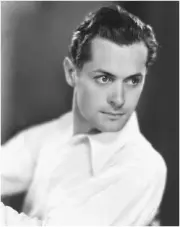
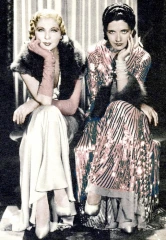

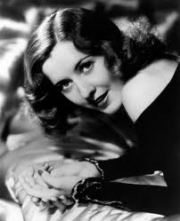
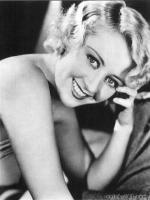


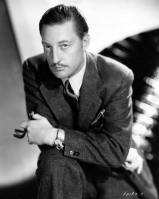




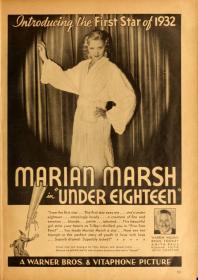
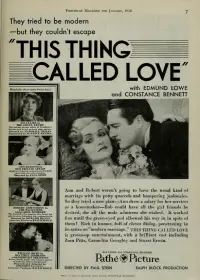

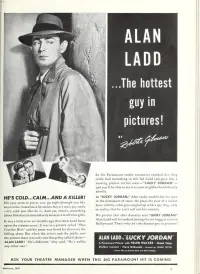
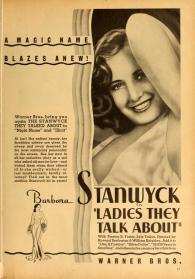

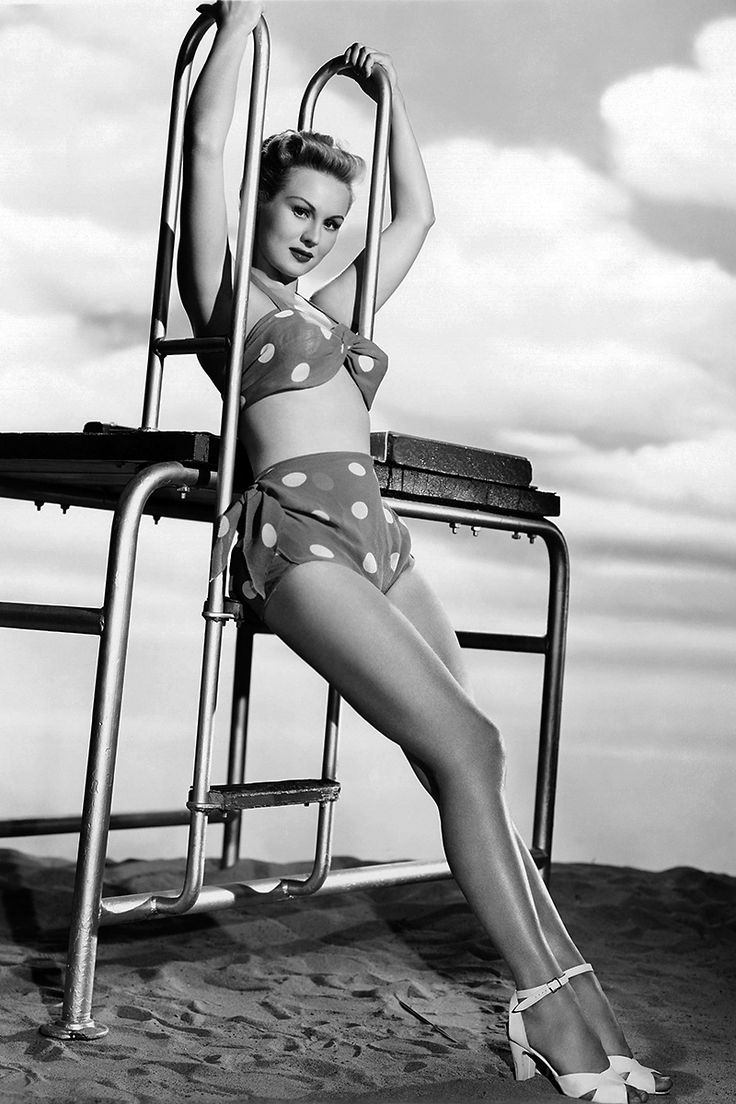

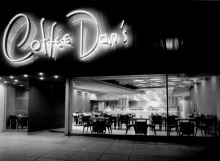

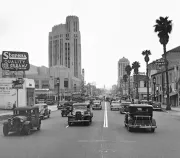
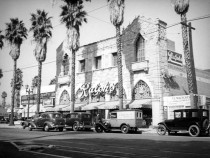


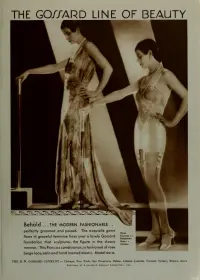

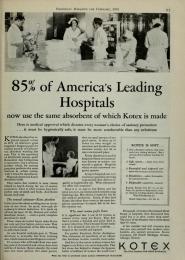

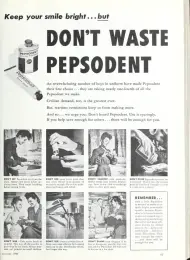


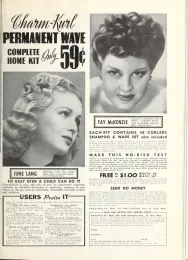


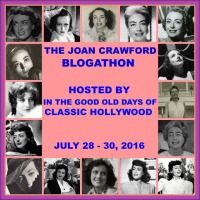


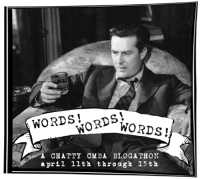

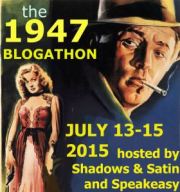
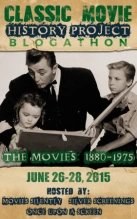
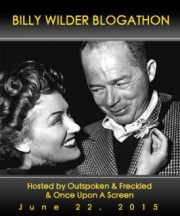


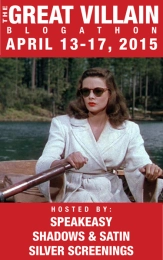


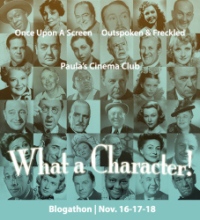
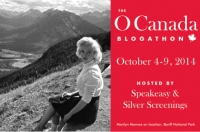


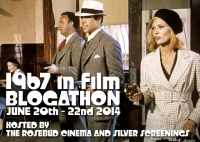


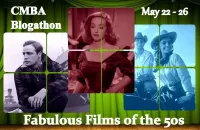
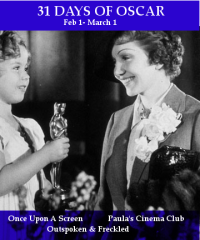
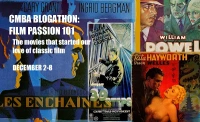







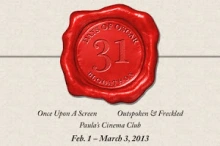

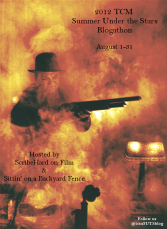


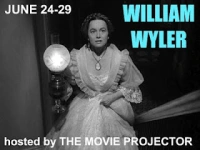





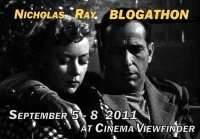

I Married A Witch is a favourite of mine in the genre fantasy comedy, and one example that fantasy movies arguably were at their best in the 1940s and early 1950s. Veronica’s role as -the original – sexy witch has been copied by others, but this film still stands out. One might get the impression by the text to the picture from Slattery’s Hurricane, that this was the only movie in which de Toth directed Lake, but he also directed her in the noir western Ramrod (1947). As for Alan Ladd in film noirs, Man In The Net (Michael Curtiz 1959) has, at least by some, been called a noir. I haven’t seen it yet, but it has been released on DVD-R. Of Ladd’s later films I have a fondness for the western heist movie The Badlanders (1958). It’s a western version of The Asphalt Jungle, but with a happy ending. Like another Delmer Daves’ movie, Dark Passage, it’s interesting as one of the very few Hollywood movies from the 1940’s and 1950’s with an ending outside of the law. In this case the small crooks succeeds with their heist against the big crooks.
Hi, Jonne — I love I Married a Witch, too — Veronica was so appealing in that!
I’m afraid I might have sounded like a certain BP executive, who happens to be a compatriot of mine, when I wrote “small crooks” last time. Small-time sounds better. Anyway, it might be entertaining for you Americans to learn that there is a certain Swedish slang expression that if you translate it proverbially is “to play Alan”. It actually was inspired by the one and only Alan Ladd. It’s meaning is close to being bossy (in some circumstances showing off), which is rather unfair to poor old Alan.
How awesome, though, that there’s a well-known slang inspired by Alan — even if it’s not exactly complimentary!
It’s such a shame that such talented actors as Ladd and Lake would have such tragic endings. I think they both were not unlike the characters they portrayed onscreen..always roving around looking for that special something something to give their life a little more meaning and stability. You wrote an excellent biography and film coverage!
Thank you so much for your kind words, Constance. I totally agree that it’s a shame what happened to so many of these stars — I guess their fame was just too much to handle. Or when they found themselves in circumstances that were less than what they’d envisioned, they were simply unable to cope with it. Sad.
Wow! An amazing post, Karen! I knew relatively little about this tragic pair before reading your tribute, and I think what I`ve learned about them has made me appreciate them even more. Thanks for this well-researched post.
Thanks so much, Ruth! It’s funny — I always liked these two, but now I appreciate them more, too!
Karen, you’ve done a splendid job on your post about the drama-packed lives of Alan Ladd and Veronica Lake! They say good things come in small packages, and they each had chips on their shoulders for various reasons, but boy, when they were on all cylinders in their films (especially THE GLASS KEY, for me, anyway), you couldn’t take your eyes off them! Actually, one of the things I first saw Ladd in was a tape (yes, a tape, not a DVD; it was THAT long ago :-)) of Disney’s THE RELUCTANT DRAGON, in which Ladd played one of the animators! It was also interesting to note that Lake in particular seemed to be quite the stage mother. My dear late mom had told me about Ladd’s wife/agent Sue Carol and how she helped make Ladd a star, having been a glamor girl back in the day. As for Lake, it’s a shame that she was so often her own worst enemy, and learned from her mistakes much too late. As you pointed out, looks always leave stars (and everyone else, for that matter), so we all have to make the most of what we’ve got, and be kind, decent and fair while things are going well! BRAVA on your excellent post for the Dynamic Duos Blogathon!
Thanks, Dor! You are so right that you can’t take your eyes off of them — they were beautiful!
Excellent choice. I admit, I like her a lot more than I like him, but together they were a noir treat. They were a bit of a disturbing duo, but I guess that what makes them “click.” Good stuff!
Thanks, Chick! I’m more fond of Veronica, too — but I loved them together.
[…] Shadows and Satin – Alan Ladd and Veronica Lake […]
Alan Ladd was a great actor. The ending to Shane always gets to me and always does bring a tear or two to my eyes. Shane is definitley one of the best movies ever made.
Hi, John — I definitely think Ladd did his best work in Shane. I’m no western fan, but Shane is one of the few that I’ve seen more than once.
Karen, if you enjoyed Shane, I hope you would consider seeing Whispering Smith. Not as good as Shane but a film well worth viewing. I just recently saw Ladd in China, Lucky Jordan and Santiago, three good films. There definitely needs to be more Alan Ladd films on DVD. Oh, I would gladly send you So Proudly We Hail, no charge, just email me. I love Claudette Colbert.
Veronica Lake’s death scene in So Proudly We Hailed has to be one of my all time favorites in cinema, second perhaps only to Godzilla’s in the original version of the film. I am also quite fond of her in I Married A Witch. As for Alan Ladd, you are sadly right, it was all downhill after Shane, but if that were to be his peak, boy was it a good one.
I am making it a point to hunt down So Proudly We Hailed — I’ve read about it, but never seen it — and your comment makes me want to see it even more!
[…] Shadows and Satin – Alan Ladd and Veronica Lake […]
Day One Recap: Dynamic Duos in Classic Film blogathon | Classic Movie Hub Blog said this on July 13, 2013 at 10:51 pm |
Very interesting post which makes me want to see these classic noirs. I’ve recently seen both of them in great roles separately – Lake in ‘Sullivan’s Travels’ and Ladd in ‘Shane’ – so must catch up on their work together. Lake may be the only major Hollywood star who has ever moved to my home town, Ipswich. I’ve read that when someone asked her “Why Ipswich?”, she replied “Why not?”
Thanks, Judy! I like Veronica’s comment about Ipswich — and it certainly sounds like her!
How fragile our egos can be.
I think Ladd was an extremely fine movie actor. At his best, he really knew what he could and should do to get his character across. I love listening to him on the radio program, “Box 13”. He had such a sexy voice.
The other day my daughter came to me with her hair flipped over one eye and said “Look, I’m Vivien Lake.” I corrected her, but that’s probably closer than a lot of 20-somethings would be.
Hi, CW — I love the anecdote about your daughter — very cool! And Alan definitely did have a nice voice — very distinct!
Ladd and Lake were as hot as ice, if you know what I mean. Too bad they didn’t make another two or three films together (I really don’t count those cameos in the all star movies like Variety Girl as a real pairing). Also on their own Ladd is quite good in The Carpetbaggers playing a Shane like character Nevada Smith. And Lake really showed what she could do as an actress in So Proudly we Hail. Also just heard that I Married a Witch is getting a dvd/blu ray release from Criterion this October!
I know exactly what you mean, Charles. I have never seen The Carpetbaggers – I’ll have to check it out!
Excellent post. I love noir.
Thank you so much! You have good taste! 🙂
Thanks so much for the post on one of my favorite screen teams. I loved your research, your insights and your selection of images!
The Glass Key is on my top ten list of crime films. Thanks for the details on that. Poor William Bendix sounds like a love!
Thanks, Gwen — William Bendix was a big softie!
Hello there, Karen. I finally made it in from a blogathon frenzy to read your fabulous post. Now that I have, I have some sympathy for Ms. Lake. I knew of her story before but you told it beautifully (Ladd’s too). Your affection for her comes shining through. I must give her work another chance. That’s all I’ll say on that.
I haven’t seen the films these two made together in eons and have them taped, ready for a renewed look. You made me want to get to it sooner, rather than later.
Fantastic duo choice for the blogathon! Thanks so much for joining in the fun.
Aurora
Sorry for the late comment, but this was an excellent tribute to one of my favorite star pairings; I love and own all three films – though THIS GUN FOR HIRE is my favorite of them – and they work so well together. Another good Ladd film from the 40’s is O.S.S., about the wartime precursor of the CIA.
Hi, Sean — thank you so much for your kind words. I share your fondness for Lake and Ladd — they were a perfect duo. I will have to look for O.S.S. — I’ve never seen that one!
[…] Shadows and Satin – Alan Ladd and Veronica Lake […]
Schedule: DYNAMIC DUOS in Classic Film blogathon | Classic Movie Hub Blog said this on October 20, 2013 at 10:27 am |
This is a wonderful blog page I happened upon today researching a Veronica Lake bracelet from her personal collection & movie worn. It is so difficult to research considering she lost so much and passed away so young. She was such a beautiful person from the inside out!
[…] https://shadowsandsatin.wordpress.com/2013/07/12/the-dynamic-duos-blogathon-alan-ladd-and-veronica-la… […]
[…] https://shadowsandsatin.wordpress.com/2013/07/12/the-dynamic-duos-blogathon-alan-ladd-and-veronica-l… […]
[…] Dynamic Duos Blog about Ladd and Lake – “Cool. Compact. Blonde. Gorgeous.” […]
Reblogged this on The Mystery of Alan Ladd.
Thank you!
[…] Shadows And Satin take us back: […]
The Peek-A-Boo Girl Gets Cut: In 1943 Veronica Lake Saved America And A Million Women's Hair - Flashbak said this on September 14, 2015 at 2:16 pm |
Hi. Wow, thank you for this article. I was told years ago by a clarvoient friend that I was ms lake in my last human life. Now I get it, this all ties in so obviously I’m glad now chose it’s moment arise.
Wow — Veronica Lake in your last human life! That’s deep, Samantha!
[…] https://shadowsandsatin.wordpress.com/2013/07/12/the-dynamic-duos-blogathon-alan-ladd-and-veronica-l… […]
[…] https://shadowsandsatin.wordpress.com/2013/07/12/the-dynamic-duos-blogathon-alan-ladd-and-veronica-l… […]